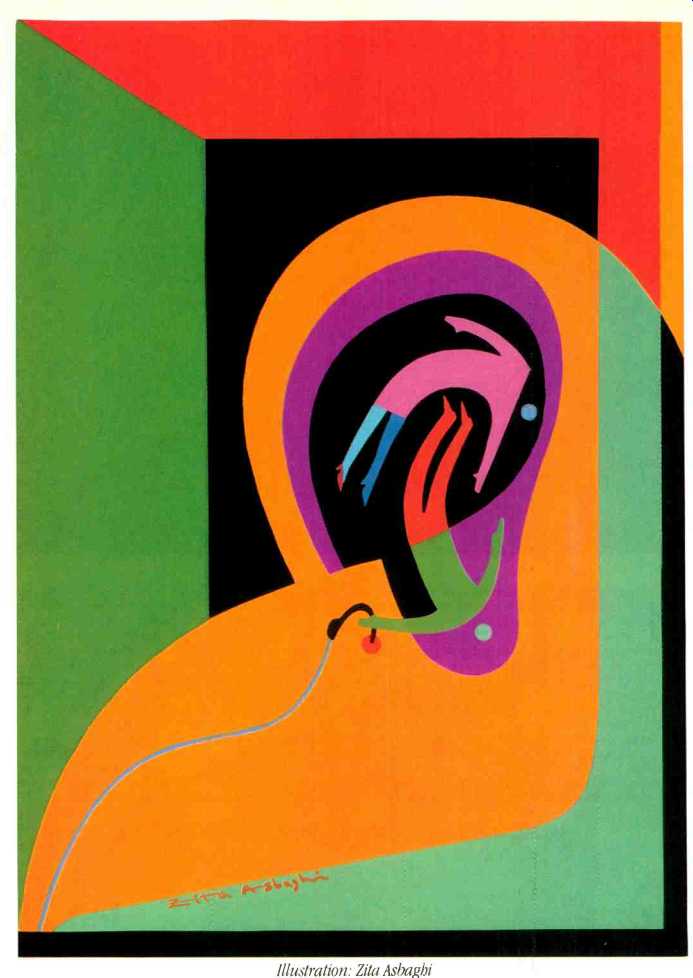
by JOHN SUNIER
I have already mentioned, in Part I, the major differences between recording bin aurally with mikes on one's own head and with an artificial head. For the amateur, the simplest approach is to wear the mikes oneself rather than tackle the immense problems of creating a perfect dummy head-problems which hundreds of researchers have devoted thousands of man-hours to solving.
Earlier, I touched on the differences between individuals' binaural hearing abilities. To draw a parallel, some people with perfectly good eyesight cannot distinguish much, or any, depth in stereo slides or photographs. A similar condition seems to occur with binaural listening, though the majority of people are totally bowled over the first time they hear true binaural sound! For those who cannot hear the effect, factors in ear/brain processing seem to be at the heart of the difficulty.
Years of listening to ordinary stereo on headphones might even be a factor. What is not a major factor is ability to hear a wide frequency response in both ears-the most effective aural localization bandwidth has been shown to be only from about 625 Hz to 2.5 kHz.
One variable that does affect the accuracy of binaural localization has been found to be the method of recording. Binaural researcher Ron Cole (see Part I) rates open-reel analog recording, with a professional tape deck and no noise reduction, as the best method for preserving the subtle information required in good binaural reproduction. The more processing used, Cole found, the poorer the binaural effect. Cassette recording without noise reduction was not quite as good as open-reel; cassette recording with Dolby B NR was further reduced in quality; cassette recording with Dolby C NR was greatly reduced, and cassette recording with dbx I and II NR were seriously compromised. Accuracy of tracking was a major factor here, since results were usually much better when playback occurred on the same machine that made the original recording, rather than on a different recorder.
A good test for distortion in binaural localization is to record a noise-producing object-anything from a motorbike to an electric razor-as it moves in a straight line in front of the listener. Any phase distortions in the binaural effect will be noted when the object is directly in front (Fig. 17). The binaural effect varies greatly with different digital recording systems. Mine, based on the Sony PCM-F1 processor, gravely spoiled the effect for in-front sounds, giving them an amorphous character that could not be precisely located until they moved left or right. However, installing gentle-slope, phase-accurate filters (from Apogee Electronics of Santa Monica, Cal.) in the input and output circuits gave me nearly as perfect a binaural effect as open-reel tape without noise reduction. Further, Cole's recent work with Sony DAT recorders shows excellent binaural results.
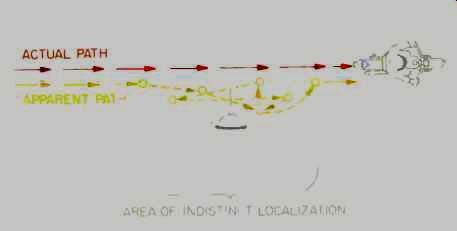
Fig. 17--Moving a noise source straight across the sound field will cause
frontal-localization problems such as these if the recording or reproducing
system has nonlinear phase. (After Cole.)
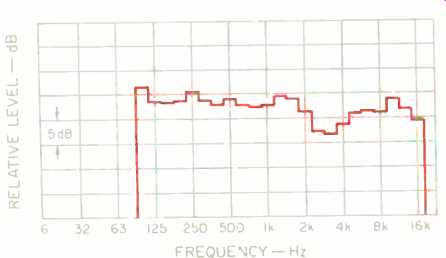
Fig. 18--Diffuse-field response of the Stax SR-Lambda Pro headphones. (Alter
Theile.)
The type of headphones used for binaural auditioning also plays an important part in the realism of the effect. Since, as noted above, the localization effect occurs in the middle frequencies, phase accuracy is more desirable than frequency response. West German binaural researcher Gunther Theile urges a new international standard of equalization for high-quality headphones. Instead of the current standards requiring free-field response and loudness-comparison measurements, Theile suggests using a flat, diffuse-field transfer function and testing subjects with probe microphones. Most electrostatic stereophones, while among the best for stereo listening, seem to lose much of the binaural experience. The Stax headphones (Fig. 18) are an exception and have been adopted by Genuit, Theile, and others as their 'reference standard for binaural experimentation. Stax has even produced a diffuse-field equalizer unit for use with their SR Lambda Pro and SR-Lambda Signature models for the most accurate playback of recordings made with dummy heads.
Cole has tested many different stereo phones for binaural listening and, in the more modestly priced area, finds most of the top line Sony dynamic 'phones, especially the MDR-M77 and MDR-M55, to be the next-best choice to the costlier Stax units. Wearing comfort is also a factor to consider; Stax and Sony 'phones are both very comfortable for longer periods of listening, and the longer the listener wears 'phones, the more plausible the binaural effect becomes.
SIMULATING BINAURAL SOUND WITH ORDINARY STEREO
I began this article by touching on the unnatural sound image that stereo headphones produce with standard two-channel stereo. Stereo separation is greatly exaggerated since there is no leakage of left-channel sound to the right ear and vice versa, as with loudspeaker listening, and in-head localization makes sounds appear to come from inside the listener's head. Research into binaural hearing suggests some partial solutions to these problems, without special binaural equipment or recordings. This is welcome, since relatively little true binaural material is thus far available.
Benjamin Bauer described the first practical circuit for this purpose. Using passive components, it was designed for headphones of a specific impedance and processed the stereo signal to simulate the cross-feed and delay effects encountered in loudspeaker listening. A dozen years ago, Martin Thomas described a more advanced active electronic circuit that is based on the same principles and is adjustable to all types of dynamic headphones (Fig. 19). Listening test subjects reported a reduction of the in head localization effect and an impression of spaciousness, rather than of precisely defined external sources. It was found that if there was a significant degree of reverberation, either natural or artificially added, the sensation of distance and direction of sound sources was greater.
Some headphone makers once offered control boxes with a blend control to simply cross-feed the channels, but without adding delay. Further, preamps with an L R continuous control, such as the Apt-Holman, can blend toward mono to reduce the "in or at the ears" phenomenon.
As already noted, subtle equalization variances can have a major effect on binaural hearing. This can also be used to improve the playback of ordinary stereo material on headphones-precisely the aim of an equalization curve suggested by Ron Cole (Fig. 20). While a parametric equalizer would work best, the curve can be approximated closely enough to make a large listening improvement with only an 8- or 10-band stereo octave equalizer. The curve should be regarded only as a guideline, since your own headphones are probably not flat to begin with and your own hearing variations must be taken into consideration.
Special systems that operate on psycho acoustic principles, such as Carver's Sonic Holography, Sound Concepts' Image Enhancer, and Omnisonix's Imager, can also deliver more natural results for headphone listening. The seemingly excessive room reverberation in stereo speaker playback of recordings encoded with the Ambisonics UHJ process is natural and acceptable with headphones. And if you still have, any SQ or QS quadraphonic LPs around, try them on headphones for an interesting experience that reduces some of the standard stereo exaggerations.
BINAURAL MOVIES
Supersonix, the first system for binaural headphone listening in conjunction with theatrical motion pictures, was used in April 1989 for a movie short made in New York City; the film was shot specifically to demonstrate binaural sound's potential. Supersonix (formerly Sonimax, and described in my March 1986 Audio article on binaural sound) uses the Brüel & Kjaer dummy head and torso for its original recording; either wired or infrared stereo headphones will be used for in-theater playback. Optimax Ill, Supersonix's New York-based developers, say that the system produces a realism of auditory imaging that no speaker system can rival, enabling viewers to localize precisely the direction and depth of each sound source and immerse themselves in the action on screen.
It certainly promises a more satisfying experience than that provided to date by theatrical 3-D vision.
Supersonix's makers don't stop at motion pictures but want to license their technology for use with television, home video, and computers. No special decoding equipment is required at the listener's end-only stereo headphones to plug into your TV. I am looking forward to one day playing The Hitchhiker's Guide to the Galaxy, with binaural sound, on my Macintosh computer!
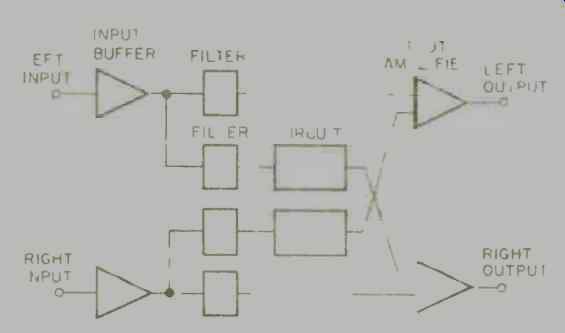
Fig. 19--Block diagram of the Thomas cross-feed and delay circuit for true
stereo listening via headphones.

Fig. 20--Suggested equalization for adding liveness and realism to playback
of stereo material through headphones. (After Cole.)
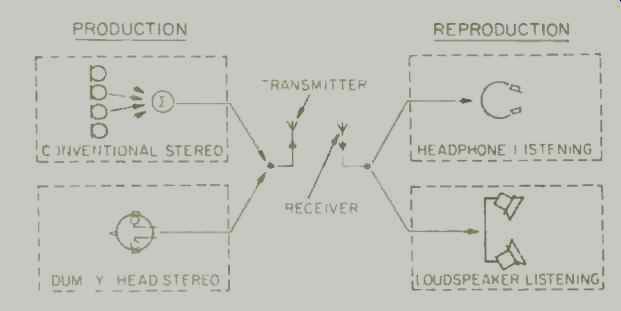
Fig. 21--Mixing sound production and reproduction processes poses problems
of compatibility. (After Theile.)
Also in April 1989, the Disney/MGM Studios Theme Park in Orlando, Florida opened a binaural theater as part of its "Monster Sound Show." Entitled Soundsations, the theater consists of nine booths with a total of 72 headphones playing a 51-minute sound effects story with a plot. Among the effects is one in which guests "feel" the warm wind from a hair dryer as the sound moves from ear to ear. Early reports are that the binaural area is already the most popular feature of the theme park's sound-effects studio.
TRANSAURAL SOUND: BINAURAL EFFECTS WITH SPEAKERS
Gunther Theile has considered the problem of the compatibility of production and reproduction in binaural sound (Fig. 21). Stereo production/loudspeaker reproduction is a space-related process, while dummy head binaural production/headphone reproduction is a head-related process. They can, however, be made compatible.
In principle, any value of signal equalization can be applied at any point in the production/reproduction chain. However, standard stereo production is incompatible with headphone reproduction, and normal binaural production is incompatible with loudspeaker reproduction. Theile observes that the incompatibility arises from the processing performed at the location-determining stage of hearing. As his basic research on directional hearing has shown, equalization applied anywhere along the production/reproduction chain must not be based on a single reference direction. All transfer functions of the outer ear must be replaced by a corresponding average transfer function to ensure that timbral defects are kept at a minimum. Theile suggests taking the diffuse sound field as the reference to achieve this goal.
Transaural stereo is a generic term for a stereo system that, like true binaural, considers the end point of the production/reproduction chain to be the actual sounds in a listener's ears. Unlike conventional stereo (which takes the loudspeakers' sounds as the end point) or binaural sound (in which the sounds for each ear are supplied by direct signal chains ending with headphones), transaural stereo's sounds occur indirectly, from the preparation of specially structured composite signals applied to the loudspeakers.
To overcome the problems caused by conventional stereo's treatment of the loudspeakers as sound sources, Jürg Jecklin suggests simulating binaural conditions at the listener's seated location. Because the speakers are fixed in place, the binaural effect is realized with the help of a compensating signal for a limited area of the room (others call this "compensation-signal crosstalk cancellation"). In addition to the direct transmission from each speaker to its respective ear, there are the cross-transmissions of left to right and right to left. A non adaptive crosstalk pre-cancellation process is used. It consists of "planting" a crosstalk process, in advance, that is the inverse of the acoustic crosstalk expected to occur. When successful, the result is elimination of all crosstalk at the listener's ears.
Transaural stereo and binaural synthesis were first tried in 1962 by Atal and Schroeder, who used a giant early computer to perform digital finite pulse response filtering for crosstalk "planting" and equalization. To determine how accurately they could reproduce the actual sounds of known concert halls, they used binaural recordings made in those halls, playing them back for test subjects in an anechoic chamber.
Another approach, called Biphonic, was proposed in the late '70s by JVC engineers. Standard dummy head binaural recordings were processed by special electronics designed to achieve transaural reproduction via two speakers. There was also a four channel system, Q-Biphonic, which used a pair of dummy heads (Audio, March 1986). Cooper and Bauck's approach to transaural sound was to simplify the technology of the crosstalk-cancelling filters to a handful of op-amp chips or a single digital signal-processing chip. The simplification also allowed control over the equalization design, which could thus be kept independent of crosstalk cancelling. Improved performance at short wavelengths made the effect of cancellation more tolerant of listener movement around the "sweet spot." Cooper and Bauck showed that crosstalk cancelling worked best with well-prepared binaural program material. It could produce not only good stereo via speakers but amazing natural spatial and imaging effects that were more robust, with respect to listener movement and playback acoustics, than anyone had thought possible. While stating that all commercially available artificial heads stand in need of further equalization appropriate to transaural recording, Cooper and Bauck were especially impressed with the transaural capabilities of the Aachen Head. They also observed that the only headphone that comes close to the 30° free-field equalization required of headphones for binaural listening is the Stax SR-Lambda Pro.
An interesting observation for surround sound enthusiasts is that transaural stereo's ear-sound orientation makes it a full-spherical surround system. It can be used, Cooper and Bauck have said, to provide any of the astonishing demonstrations of speaker-oriented quad systems of a previous era; they also mention Ambisonics UHJ as an exemplary sound field-oriented system that could be recast for the transaural format.
Crosstalk-cancellation work has also been done recently by Danish researcher Henrik Moller, using the Neumann KU 81i head and finite impulse response filters with digital processors. Tests with pink noise in an anechoic room showed results with two speakers that equaled the realism of stereo headphones.
Many of Moller's subjects indicated even better spatial discrimination of sounds with the transaural speakers than with headphones, especially when the sounds were located in the front region. The position of the listener's head was found to be an important factor, but only when the person was seated at exactly equal distances from the two speakers.
LEXICON'S CP-1 BINAURAL SPEAKER PROCESSOR
The first home processor to achieve realistic loudspeaker reproduction of true binaural recordings is the Lexicon CP-1 digital audio environment processor (Fig. 22). The CP-1 is one of the increasingly popular surround processing units and includes a "Binaural" mode among its many programs (Audio, November 1989). This unusual feature grew out of work by recording engineer/physicist David Griesinger. At the same time Griesinger was developing the CP-1's "Binaural" program, he was working on ways to improve the loudspeaker compatibility of true binaural recordings. He had several goals in mind: The amazing realism of binaural playback with headphones, the great accuracy of localization using dummy head recordings, the possibility of localization above and behind the speakers with just two speakers, the elimination of crosstalk during playback and the extended bass response gained by placing omnidirectional pressure transducers in the dummy head. Griesinger also feels that converting true binaural sound to enhanced stereo is more promising than trying to convert stereo to binaural, considering the lack of information provided by ordinary stereo.
Since few recordings are available in this compatible binaural form (the Aachen Head recordings probably come the closest), Griesinger included a crosstalk-elimination circuit in the digital surround processor, using some of the same processing chips that create the ambience and delay signals fed to side and rear speakers in surround-sound systems. Although Lexicon's surround-sound approach concentrates on intensifying a room's lateral sound energy and stresses the importance of side speakers in addition to rear, the binaural circuit uses no side speakers. Rear speakers, fed a simple L R signal, are optional.

Fig. 22--The Lexicon CP-1 digital audio environment processor, a surround
system which also allows binaural listening through speakers.
The side speakers are simulated via crosstalk elimination patterned on Atal and Schroeder's work, described above. Lexicon's measurements resulted in an algorithm very close to Atal and Schroeder's. The Lexicon system not only cancels the signal that diffracts around the listener's head but cancels the signal used for the first cancellation (Fig. 23). Separation at low frequencies is increased by use of an L R boost circuit with phase compensation (Fig. 24). There is a similar program setting for transaural reproduction of ordinary stereo recordings as well as binaural material already corrected for poor low-frequency separation.
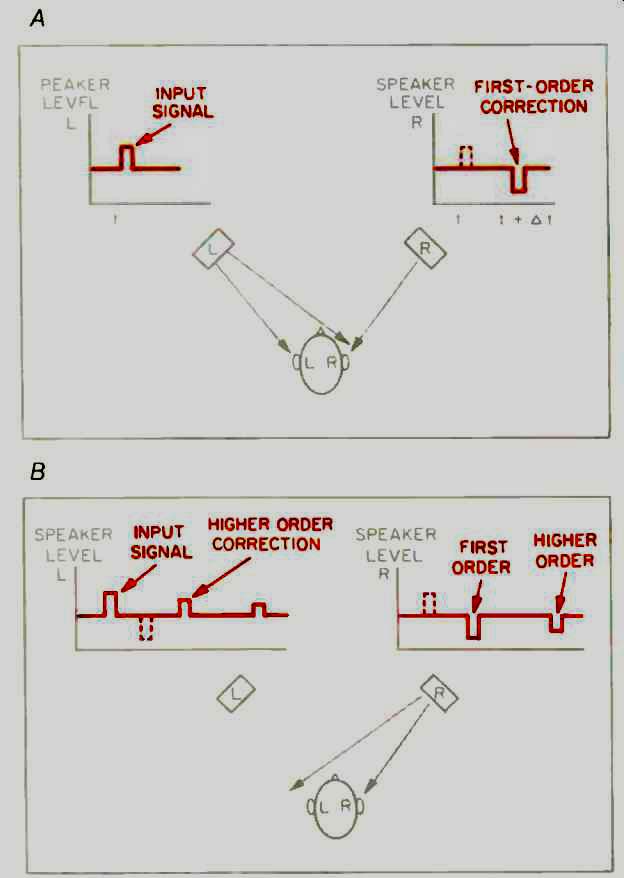
Fig. 23--In first-order crosstalk cancelling (A), sound from the left speaker
reaches the listener's right ear after a delay (it). Supplying an equally
delayed signal of opposite polarity to the right speaker cancels the crosstalk
signal. However, this first-order correction signal travels to the listener's
left ear, where it will be heard unless cancelled by an additional correction
(B). (After Griesinger.)
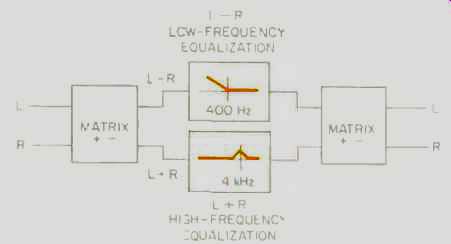
Fig. 24--Block diagram of spatial equalization ("shuffling") circuit.
(After Griesinger.)
However, no digital delay is used in either of these programs, as it is in the digital surround processor's other modes. Lexicon calls crosstalk elimination without artificial ambience generation "ambience extraction." This program requires careful adjustment using a digital noise generator built into the Model CP-1. The listener sits in the sweet spot and adjusts balances until a left-only sound appears in the left ear, with a definite null point appearing in the right ear. The same process is then repeated for the right ear. Major differences between the two ears may be a sign of high-frequency hearing loss in one ear.
While the sweet spot for high frequencies is quite narrow-about 1 inch on either side of a straight line between the two speakers--at lower frequencies, the positioning requirements are more relaxed and listeners throughout a room can enjoy the improved sound. Best results are achieved when the room is fairly dead acoustically, especially at the speaker end, and the speakers are located well away from the walls and have good imaging characteristics. Speakers whose drivers face all directions compromise the effect. In my own listening room, minor changes too subtle to make an audible difference in ordinary stereo have a major effect on transaural playback-for example, realism is startlingly improved when I close the window drapes on both the left and right sides of the room. The positive effect of an A.S.C. Tube Trap between the two front speakers is also more pronounced than with standard stereo. Additionally, a low-level feed of L-R to the rear speakers (so low it is only noticeable when turned off) aids in localization. Griesinger reports that on recordings with rear information, he was not always able to localize the rear speakers properly on first hearing; after several listenings, however, his ear/brain seemed to train itself to take advantage of all the cues being offered and could localize to the rear.
When properly set up, as above, transaural audio can actually surpass binaural headphone listening (provided the original recordings are properly equalized), with the added benefits of freedom of movement and uncovered ears. From my own listening experiments with binaural recordings, including those made wearing the mikes myself, I would say the "Binaural" mode of the CP-1 provides the most realistic playback of height, depth, and surround I have yet heard through speakers.
OTHER TRANSAURAL PROCESSES
Three recently publicized processes for improving sound localization can probably also be considered transaural: O Sound, B.A.S.E., and 3-D Audio. The publicity for some of these seems to overshadow the actual use, and at least one manufacturer fails to detail what their processor actually does. (Such a "black-box" ploy may remind readers of Hugo Zuccarelli's Holophonics system, which Zuccarelli's denials notwithstanding-appears to be a type of binaural dummy head.) These new processes may be startling to those who haven't heard Ambisonics, Dolby Surround, or good digitally processed surround. Whereas the latter all require special decoders/processors at the listening end and at least four loudspeakers, the new processes are carried out at the recording/mixing end and require no special playback equipment and only two speakers.
O Sound, a technology consisting of both hardware and software, processes ordinary two-channel stereo in the mixing stage to achieve "3-D sound." Announced with major fanfare and already doing well on the stock market, the process requires only a pair of stereo speakers and is said to "give the engineer the option of placing the sound anywhere in the room instead of just in the left or right speaker," according to Lawrence G. Ryckman, president of Archer International Developments in Calgary, Alberta, Canada, which manufactures O Sound. As of March 1989, no record company had yet decided that this little black box would increase sales enough to warrant licensing it.
Nevertheless, Todd AO/Glen Glenn Sound, a major Hollywood film technology. firm, has invested in Archer, and one of Hollywood's most powerful talent agencies has begun representing O Sound in addition to its clients in the performing arts! B.A.S.E. is the acronym for Bedini Audio Spacial Environment. High-end component maker John Bedini has designed a black box processor which he claims will create a headphone listening experience via two loudspeakers. Like Carver, Bedini refers to a "holographic audio image." The processor analyzes and separates a stereo signal into mono and stereo components. The mono information can then be moved forward, backward, to the sides, or anywhere within 360° without any loss of stereo ambient space (L-R information), which can be increased or decreased.
There are two B.A.S.E. units available so far. One is a complex, $6,000 professional unit for use in mixing and mastering. If it is used in recording, the resulting album needs no further decoding or processing of any kind. The other is a simpler consumer unit that enables the user to control all spatial aspects of his stereo recordings. Both units have headphone jacks, and special mixes may he created for optimum headphone listening to either binaural or stereo material.
The process was used in mixing the soundtracks of the movies Halloween 4 and Star Trek V and is now being used on pop, country, and jazz sessions for Capitol, CBS, Elektra. MCA, RCA, and PolyGram, among others. B.A.S.E.'s parent company, Gamma Electronic Systems, hopes to make it the standard processor for HDTV sound.
Of the three processing methods, B.A.S.E. is the only one I have heard. On playback of standard two-channel material, it does impart more depth and width. Unlike some other psychoacoustic circuits, such as Sound Concepts' Image Enhancer or Carver's Sonic Holography, it does not require sitting in a precise sweet spot to hear the effect; this maces it especially suitable for movie theaters. However, it is interesting to note that not a single classical recording has yet used B.A.S.E. Perhaps acoustic music .s compromised by such processing. I preferred the clarity of the "before" example on several demo tapes over the "after" sample's wider and more spectacular version. Similar problems have been noted with certain Dolby Surround processors. They are exciting for video movie use and pop music but wreak havoc with classical music, sending instruments sailing about the room and altering their timbres.
The third of these new processors is no little black box: In its current size (eventually to be reduced via LSI chips), it is a computer as big as a refrigerator. Myers 3-D Audio is the brainchild of Silicon Valley prodigy Pete Myers, who has devised a mathematical model for the way the ears and brain pinpoint sound. The technique is used to modify sounds during recording; using only two speakers (both located in front), it can trick the listener's brain into perceiving a sound as coming from any location. According to Myers' partner, Ralph Schaefer, the complex process is an example of "bionics," the electronic emulation of a biological process-in this case, localization of sounds in space.
Myers created 3-D Audio while working as a NASA consultant; military contractors are currently studying ways to use the processor to help fighter pilots locate enemy aircraft aurally, lessening the visual overload of complex instruments.
Researchers throughout the world are continuing their efforts on many different fronts to perfect a more realistic psychoacoustic experience with recorded sound than that offered by present two-speaker stereo. The pace of this effort has recently picked up, and I predict it will result in further improvements in the listening experience. Whether or not a new format will soon replace two speaker stereo is open to question, but digital and other computer technologies will surely be a part of future developments.
REFERENCES
Bartlett, Bruce, "An Improved Stereo Microphone Array Using Boundary Technology: Theoretical Aspects," Audio Engineering Society 1989 Convention, Preprint No. 2788(A-1).
Bauer, B. B., "Stereophonic Earphones and Binaural Loudspeakers," Journal of the Audio Engineering Society, April 1961.
Blauert, Jens, Spatial Hearing, MIT Press, Cambridge, Mass., 1983.
Bray, Wade, personal communication.
Butler, R. A. and K. Belendiuk, "Spectral Cues Utilized in the Localization of Sound in the Median Sagittal Plane," Journal of the Acoustical Society of America, Vol. 61, 1977.
Cole, Ron, personal communication.
Cooper, Duane and Jerald Bauck, "On Acoustical Specification of Natural Stereo Imaging," AES 1988 Convention, Preprint No. 1616(X)3.
Cooper, Duane and Jerald Bauck, "Prospects for Transaural Recording," JAES, January/February 1989.
de Boer and van Urk, "Einige Einzelheiten beim Richtungshóren," Philips Tech. Rundschau 6, 1941.
Griesinger, David, "Equalization and Spatial Equalization of Dummy-Head Recordings for Loudspeaker Reproduction," JAES, January/February 1989.
Griesinger, David, "Theory and Design of a Digital Audio. Signal Processor for Home Use," JAES, January/February 1989.
Hertz, Bent F., "100 Years with Stereo: The Beginning," JAES, May 1981.
Hiraga, Jean, "Procede Binaural," Revue du Son (Editions Frequencies), date unknown.
Jecklin, Jürg, "A Different Way to Record Classical Music," JAES, May 1981.
Moller, Henrik, "Cancellation of Crosstalk in Artificial Head Recordings Reproduced Through Loudspeakers," JAES, January/ February 1989.
Plenge, G., "On the Behavior of Listeners to Stereophonic Sound Reproduction and the Consequences for the Theory of Sound Perception in a Stereophonic Sound Field," AES 1987 Convention, Preprint No. 2532(C-7).
Rodgers, C. A., "Pinna Transformations and Sound Reproduction," JAES, April 1981.
Russotti, J. S., T. P. Santoro, and G. B. Haskell, "Proposed Technique for Earphone Calibration," JAES, September 1988.
Sakamoto, Gotoh and Kimura, "On Out-of-Head Localization in Headphone Listening," JAES, November 1976.
Shaw, E. A. G., "Transformation of Sound Pressure Level from the Free Field to the Eardrum in the Horizontal Plane," JASA, Vol. 56, 1974.
Shaw, E. A. G. and R. Teranishi, "Sound Pressure Generated in an External Ear Replica and Real Human Ears by a Nearby Point Source," JASA, Vol. 44, 1968.
Snow, William B., "Basic Principles of Stereophonic Sound," JAES, November 1953.
Theile, Gunther, "On the Standardization of the Frequency Response of High-Quality Studio Headphones," JAES, December 1986.
Vanderlyn, Philip, "Auditory Cues in Stereo phony," Wireless World, September 1979.
Vaughan, Denis, "New Directions in Stereo--Ear Exercises for Experts," Studio Sound, July 1981.
Wightman, Frederic and Doris J. Kisstler, "Headphone Simulation of Free-Field Listening. I: Stimulus Synthesis," JAES, February 1989.
CURRENT BINAURAL DISCOGRAPHY
Format, unless stated, is Compact Disc.
Bracketed codes indicate: Aachen Head compatible binaural recordings, AA; German import, G, and direct-metal mastered, DMM. No special decoders are required to listen to any of these recordings, only stereo headphones. Many of them reproduce well over loudspeakers. Most are difficult or impossible to find in stores.
Addresses of four direct sources are listed at the end. The Binaural Source offers most of these recordings and will soon offer many not-yet-released albums. For more information, write to: The Binaural Source, Box 1727, Ross, Cal. 94957.
All-Binaural Special Broadcasts of the author's radio show, "Audiophile Audition," for headphone listening, aired twice annually on approximately 180 (primarily public) radio stations nationally. Next binaural broadcast is Sunday, February 4, 1990; call your local station for details.
Aura. Binaural radio drama from a story by Carlos Fuentes, directed by Tom Lopez. Recorded with Neumann KU 81i dummy head. Type II cassette (ZBS Media).
Barock: Concerto Avenna. [G] Concerti Grossi by Corelli and Handel; quartet by A. Scarlatti, played by The Warsaw Baroque Soloists. Recorded with KU 81 i head (AudioStax AXCD-90201). Binaural Audition. One-hour demonstration tape of binaural music and sound environments. Real-time Type II Dolby B NR cassette (Audiophile Audition). Binaural Man I and II. Music, humor, and performance piece by Norman Durkee.
Two 1-hour cassettes (International Binaural Institute).
The Blue Max Tape. Binaural demonstration cassette of music for headphone listening. Real-time Type II Dolby B NR cassette (In Sync Laboratories, 2211 Broadway, New York, N.Y. 10024.) Buxtehude, Moondog, and Co. [AA] Paul Jordan, Schuke organ, playing works by Belgica, Buxtehude, Moondog, Tucker, Fischer, and Widor (Spectrum SD-1001).
Durkee: Oxymora. World's first binaural opera, adapted from diaries of ladies of the Japanese court, circa 900 A.D. Music inspired by Kurt Weill, played on a Kurzweil synthesizer. Two 1-hour cassettes (International Binaural Institute). It's a Jungle in There. Sounds of the Costa Rican rain forest, at normal and slow speeds. One-hour Type II Dolby B NR cassette (Tapir Tapes).
Magic Secret. [AA, G, DMM] Klaus Ignatzek, playing jazz on a Bbsendorfer piano. LP only (Nobel 8517). Messiaen: Livre du St. Sacrement. [AA, G] Almut Rosier, organ. Two CDs (Motette 11061).
Midnight Sun. [AA, G, DMM] Andy Lumpp, piano; Hugo Read, saxophone; Michael Kuttner, percussion. LP only (Nobel 8312).
Glenn Miller and andere Big Band Favoriten. [G] Dance Orchestra of Radio Berlin/Martin Hoffman. Recorded with KU 81i head (AudioStax AX-9(I301). The Mist. Stephen King novel in a large cast binaural radio drama, directed by Tom Lopez. Cassette available at selected bookstores (ZBS Media/Simon & Schuster).
David Montgomery Recital. Piano pieces by Schumann, Liszt, and Chopin. Binaural direct-disc LP; cassette on special order (Sonic Arts Lab Series 5). Mozart: Symphony No. 36 in C (" Linz"). Midsummer Mozart Festival Orchestra/George Cleve. Cassette available on special order (Sonic Arts Lab Series 5). Nightingale (The Sound of Nature). [G] One-hour recording of nightingales. Recorded with KU 81i head (Wergo Spectrum SM-9002-50).
The Organs at Heimbach. [AA, G, DMM] Michael Führer, organ, playing works by Bruhns, Butcher, Corrette, Fletcher, Dubois, Liszt, Brahms, and C. P. E. and J. S. Bach, on 19th-century and modern Beckerath organs. LP only (Mitra). Lou Reed: The Bells. 1979 album by rock vocalist, recorded in West Germany using a binaural dummy head. LP ( Arista AB-4229).
Romantic Organ Music. [G] Christopher Dearnley, organ, playing works by Liszt, Barnekow, Rinck, Stanford, Bush, Milford, Wood, Parry, and Dearnley, in St. Paul's Cathedral, London. Recorded on KU 81i head (Motette 10911). The Space-Sound CD. [G] Dummy head recordings made with KU 81 i head and a digital processor; 21 selections, including Wagner, blues, and a visit to a clock museum, with detailed booklet (AudioStax AX-91101).
Spring Concert in Riverain Forest (The Sound of Nature). [G] Environmental sounds. Recorded with KU 81i head (Wergo Spectrum SM-9003-50). Sticks. Binaural radio horror drama, directed by Tom Lopez. Type II cassette (ZBS Media).
Tango Diablo. Binaural cabaret by Norman Durkee satirizing Latin cabaret music and '60s cinema. One-hour cassette (International Binaural Institute). Tango Subversivo. [AA, G, DMM] Jürgen Sturm's Ballstars jazz ensemble playing 10 satirical jazz tangos. LP only (Nabel 8413).
Then and Now. Donna Parker and Bill Vlasak at the Wurlitzer pipe organ, playing 17 selections. First U.S. CD recorded with Aachen Head (Donna Parker Productions E-1523CD).
Widor: Organ Symphony No. 2; Vierne: Messe des Defunts. [AA, G] MorissetBalier, organ (Motette 11231). Widor: Organ Symphonies Nos. 3 and 7.
[G] Daniel Roth, organ. Recorded with KU 81i head (Motette 11241). Widor: Organ Symphonies Nos. 4 and 6.
[G] Suzanne Chaisemartin, organ. Recorded with KU 81i head (Motette 11131).
Widor: Organ Symphony No. 8; Vierne: Arabesque; Guilmant: Marche Funebre et Chant Seraphique. [AA, G] Odile Pierre, organ (Motette 11251). Woofers, Tweeters, and All That Jazz! Jazz combo featuring pianist Art Lande.
Biraural direct-disc LP; cassette on special order (Sonic Arts Lab Series 7). Xénakis: Pleiades. Percussion work in four movements, played by the Strasbourg Percussion Ensemble (Harmonia Mundi France HMC-905185).
Binaural sound on current pop recordings: Steve Winwood, "Higher Love," Back in the High Life (Island); Stevie Wonder, several tracks, Journey Through the Secret Life of Plants (Tamla); Pink Floyd, various effects, The Final Cut (plus some of their other CBS albums); also see Lou Reed, The Bells, above.
Audiophile Audition
Box 1621 Ross, Cal. 94957 International Binaural Institute Box 45575
University Station Seattle, Wash. 98145-0575
Donna Parker Productions Box 19371 Indianapolis, Ind. 46219
ZBS Foundation RR #1, Box 1201 Fort Edward, N.Y. 12828
(Source: Audio magazine, Dec. 1989)
Prev: Binaural Overview: Ears Where the Mikes Are--part 1 (Nov. 1989)
Also see:
A History of Binaural Sound (Mar. 1986)
The Aachen Head System--Binaural Recording for Headphones and Speakers (Dec. 1989)
Illusions for Stereo Headphones (Mar. 1987)
The Filter in out Ears (Sept. 1986)
= = = =